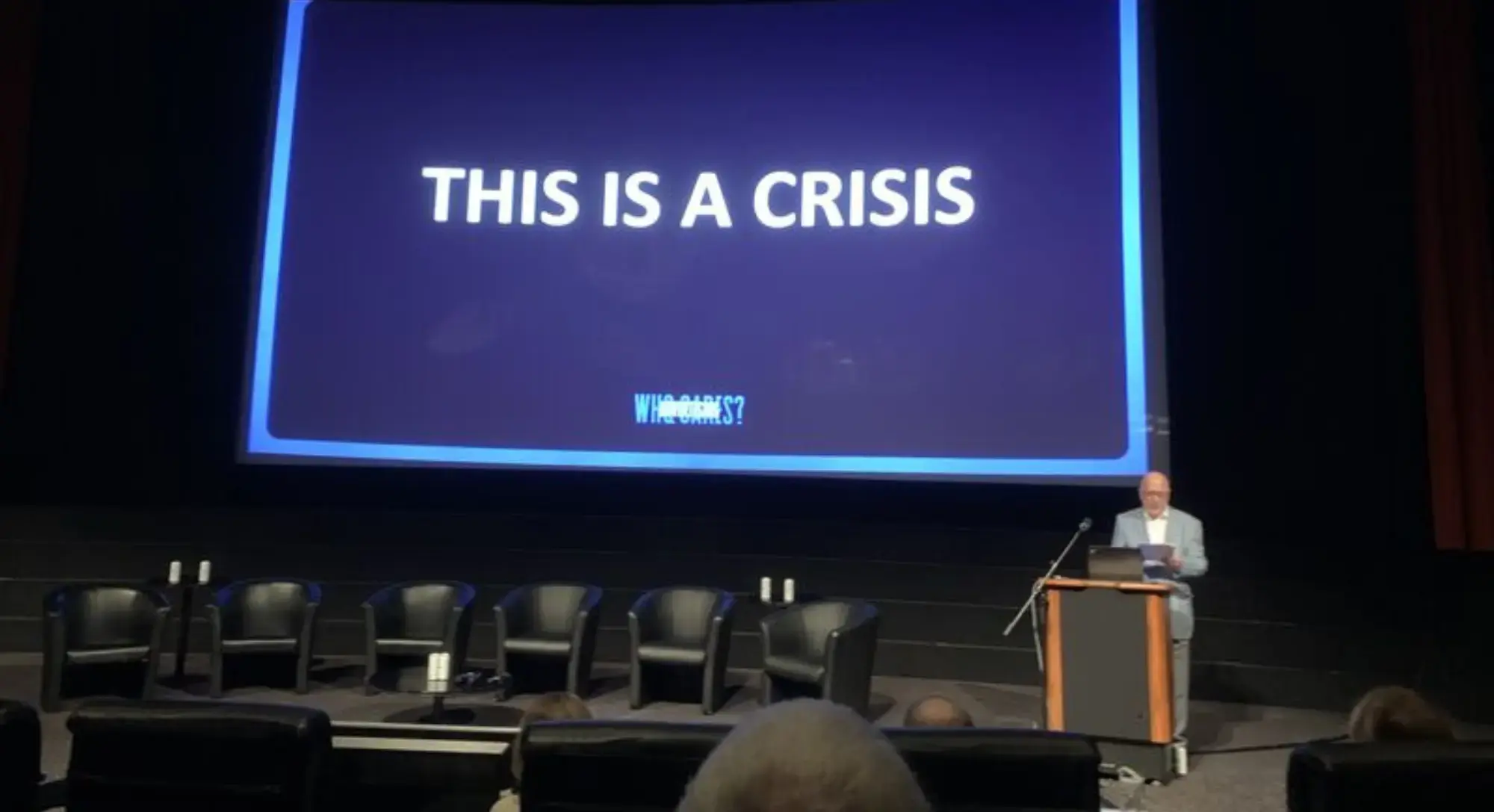Last year, I attended the first Advertising: Who Cares? conference.
It felt different from any other industry event I had been to. No jargon, no showreels, no empty optimism. Just people who genuinely care about the future of advertising sitting together to fix what is broken.
So when the organisers announced a follow-up conference this year, I knew I had to be there again.
The idea behind Advertising: Who Cares? came from two people I know and respect deeply: Nick Manning and Brian Jacobs.
Nick was actually my former boss at Ebiquity. Both Nick and Brian have spent their lives helping advertisers make better decisions, and this movement reflects that same spirit.
Their goal is simple. To bring the industry back to what advertising is supposed to do.
Build brands that people remember. Fund quality media. And create real economic value. Not vanity clicks. Not short-term metrics.
This year’s event built on the foundation they started last year. It was bigger, sharper, and more urgent.
It gathered people from all sides of the industry, including advertisers, agencies, auditors, publishers, and ad tech specialists. The mood was honest. Everyone agreed that something needs to change.
In this article, I want to share what I learned from the sessions, the key insights that stood out for me, and what mid-sized global advertisers can take away from this movement.
1) Business Models Set The Rules
The day opened with a blunt reminder. A handful of platforms now take about half of the world’s ad revenue and most of the growth.
Their product is software. Their customer is the advertiser. Their currency is your data and attention.
When that much money concentrates in a few places, the people with the gold write the rules. That is not a moral judgement. It is market physics.
This matters because the default logic of those systems is one-to-one interruption at scale. Quick auctions. Endless optimisation. Cheap units.
It can work for short hits. It rarely builds memory or pricing power.
When most spend follows that logic, quality media struggles to fund itself and effectiveness decays. That is the “doom loop” people keep referencing.
The other uncomfortable point. Inside client companies the 7Ps live in different silos. Price. Product. Place. Promotion. People. Process. Physical evidence.
They carry different targets and data. Marketing gets judged on this quarter’s measures. Finance prioritises near-term savings. Operations chase a different clock speed.
In that set-up, advertising becomes a faucet to turn up or down rather than a lever for enterprise value.
What to do now:
-
Draw a single line from advertising to business value. Put CFO-acceptable metrics on the end of the line. Profit. Cash. Contribution.
-
Create one shared scorecard across the 7Ps. One truth. One weekly meeting.
-
Run a simple “turn-down test.” Reduce one big digital channel by 20 percent for four weeks with holdouts. Track revenue and margin at total business level. Keep what truly moves the needle.
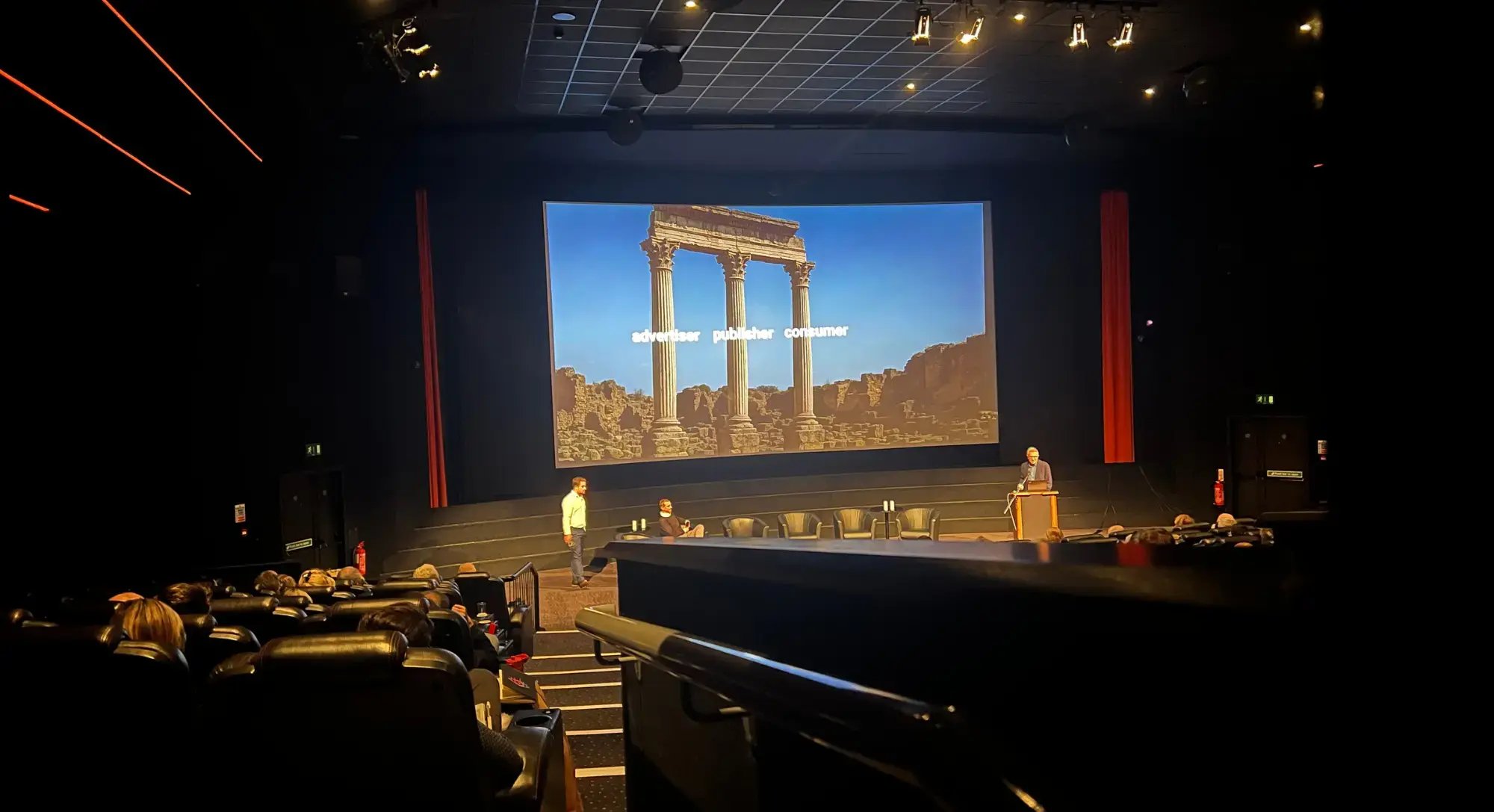
2) Ad Tech and the Hidden Cost of "Precision"
Ad tech experts on stage did not rant. They showed the pizza. You buy a pizza. By the time it reaches the table a big slice has already gone to intermediaries.
Then take off what nobody saw. Then remove the parts shown to machines or to the wrong people. The slice that actually did a job is smaller than most like to admit.
Two other truths. First, “personalisation” on the open web is mostly a promise rather than a reality.
Second, poor environments make brands look cheap. Comments from advertisers were clear. Some news sites are so overloaded that the experience itself puts people off.
Cheap reach is not low cost when you count the damage.
What to do now:
-
Buy fewer things. Buy better things. Prefer direct paths to publishers or clean PMPs.
-
Put strict supply rules in contracts. No made-for-arbitrage sites. No unknown domains. No resellers without written approval.
-
Track human reach and attention minutes not just impressions. If your trading desk cannot show those, press pause.

3) Trading, Transparency and Trust
A big topic at the conference was how media is bought and sold, and how the balance of power has shifted.
Few subjects capture this better than Principal Media (also known as Inventory Media or Proprietary Media). It sounds harmless. In practice, it has become one of the biggest blind spots in modern media trading.
When an agency trades as principal, its interest shifts from optimising your spend to maximising its margin. Your brand and your consumers stop being the focus.
The incentive moves toward selling as much of its own inventory as possible, regardless of whether that media is the best fit for your business.
This practice exists under many names. Principal Media. Inventory Media. Value-based trading. Each version has the same core issue: opacity.
The advertiser loses visibility into the true cost, the true media source, and the true level of independence behind the recommendation.
To be fair, not all principal models are harmful. Some are disclosed clearly, priced fairly, and genuinely deliver incremental value. But in most cases, the lines are blurred.
The message from Advertising: Who Cares? was simple. Transparency must be non-negotiable.
What to do now:
-
Ask your agency to confirm in writing whether it operates as a principal or an agent for each channel you buy.
-
Require full disclosure of any Principal Media or inventory trading arrangements, including how pricing and margin are calculated.
-
Add a clause in your contract requiring prior written approval before any Principal Media is purchased on your behalf.
-
Request a quarterly transparency report showing all inventory sources, mark-ups, and rebates associated with non-disclosed buys.
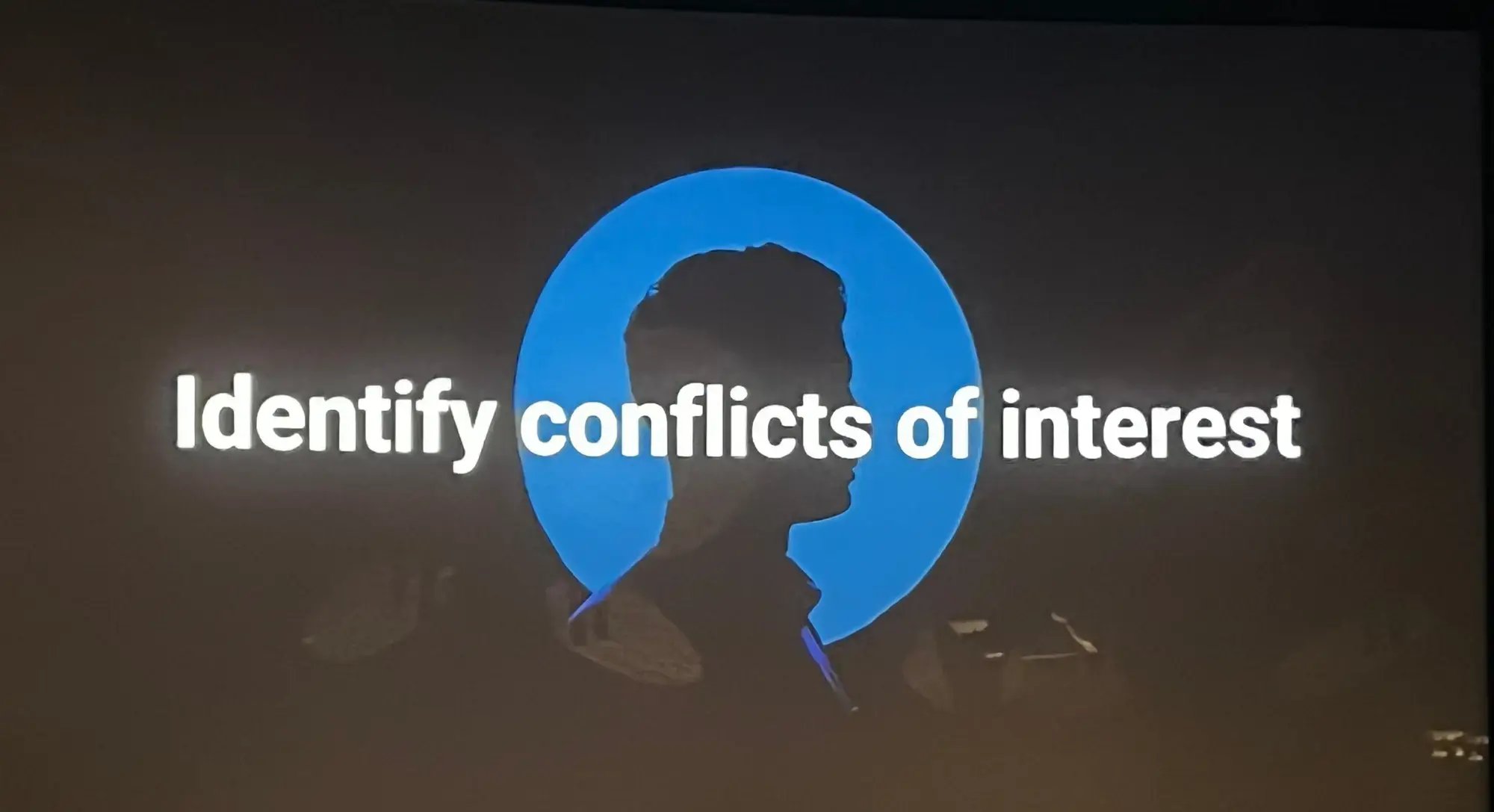
4) Measurement and Accountability
If there was one recurring theme throughout the Advertising: Who Cares? conference, it was this: advertisers are measuring the wrong things.
The industry has become obsessed with what is easy to count rather than what is worth measuring.
Click-through rates, impressions, and conversions have replaced more meaningful indicators such as brand growth, profit, and long-term value creation.
The core issue is accountability. Every stakeholder has their own metric of success. Media teams focus on CPMs, digital teams on click rates, finance on cost reduction.
But few are judged on enterprise growth or market share. Accountability has fractured into silos.
The conference called for a full reset. Measurement must return to its original purpose: proving the business value of advertising. Not the number of ads delivered, but the value created by them.
What to do now:
-
Rebuild your measurement framework. Focus on KPIs that show business impact, such as profit growth, market share, or brand preference.
-
Run controlled turn-down tests. Temporarily pause spend in specific channels to identify what truly drives incremental results.
-
Balance brand and performance media. Protect long-term brand equity while maintaining short-term efficiency.
-
Hold agencies accountable for outcomes. Link part of their remuneration to business results rather than hours worked or volume traded.
-
Use independent verification. External audits and tracking partners can validate outcomes and ensure data integrity.

5) Quality Media and Why it Still Matters
One of the theme of the Advertising: Who Cares? conference was about what kind of media truly deserves to be called quality media.
It is easy to confuse quality with tradition. Many assume it simply means television, premium publishers, or well-known news brands.
But as Nick Manning and others reminded the audience, quality media is not defined by format or channel. It is defined by the value of attention and the environment in which that attention occurs.
Quality media captures attention, builds memory, and connects the brand to trusted content. It informs, entertains, and earns its place in people’s lives.
In contrast, low-quality media interrupts, overwhelms, and often goes unnoticed. It exists purely to serve programmatic systems, not human audiences.
The problem is that much of the digital ecosystem now rewards quantity over quality.
Automation and auction-based trading have pushed advertisers towards low-cost, low-attention inventory. Clicks are cheap, but they are rarely meaningful.
This has created what Nick Manning called a “market failure.” Advertisers are chasing scale, but losing impact.
The conference made a strong point. We are not facing a media shortage. We are facing an attention shortage. The supply of impressions is infinite, but the supply of genuine human engagement is not.
Advertisers need to rethink how and where they spend to rebuild value in the media system.
Quality media also plays a social role. It funds journalism, supports culture, and sustains creative industries.
Every euro or dollar spent in a trusted media environment strengthens both brand equity and the media ecosystem that underpins it.
The key insight is simple. Quality media is not about nostalgia or price. It is about context, credibility, and contribution.
The advertisers that invest in engaged environments will build stronger brands and better returns.
What to do now:
-
Define quality for your brand. Agree internally what environments meet your standards for context, credibility, and audience engagement.
-
Audit your programmatic supply chain. Identify spend flowing into made-for-advertising or arbitrage sites and redirect it toward high-attention publishers.
-
Balance reach with relevance. Maintain scale, but prioritise environments that deliver genuine attention and positive association.
-
Collaborate with your agency. Set clear brand safety and quality media benchmarks in your trading guidelines and hold them accountable for compliance.
-
Support quality publishers. Directly invest in credible media partners that align with your brand values and contribute to a healthier advertising ecosystem.
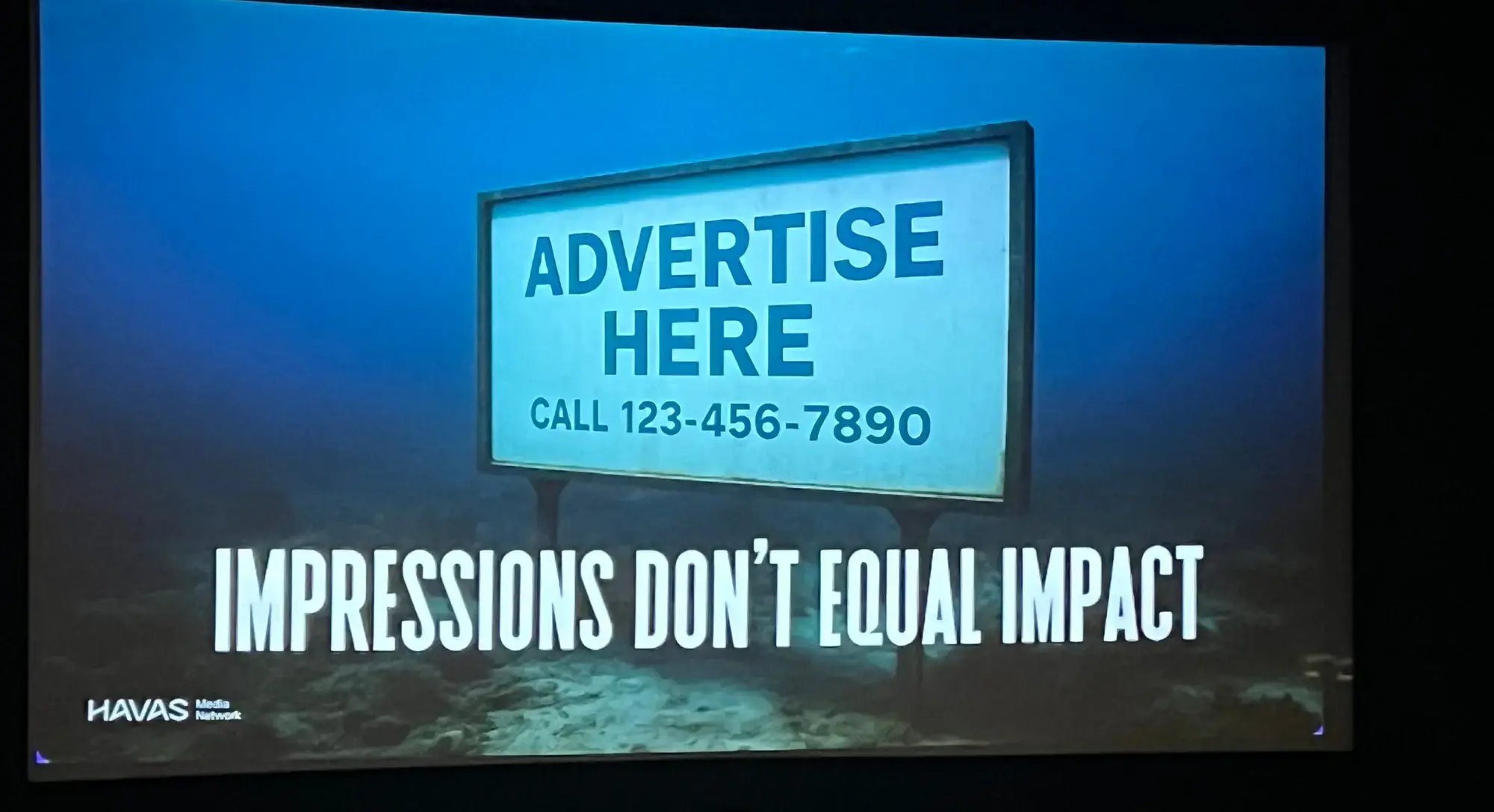
6) The Future of Communications Planning
If there was one optimistic note at Advertising: Who Cares?, it came from the sessions on the future of communications planning.
Despite all the challenges, the message was clear: good planning still matters more than ever.
The media world has never been more complex. Automation, AI, and platform consolidation have turned media buying into a technical discipline.
But the real opportunity lies in bringing strategy and human judgment back into planning, i.e. the ability to see the full picture and connect brand purpose with people, not just impressions with algorithms.
Several speakers warned that communications planning has become too tactical. It is often driven by platform dashboards instead of consumer understanding.
The result is fragmented plans built around media channels rather than brand objectives. Many advertisers are optimising in parts but underperforming as a whole.
The future of communications planning will depend on reuniting three elements that have drifted apart: strategy, creativity, and data.
Strategy defines direction. Creativity builds emotion and memory. Data provides evidence and accountability. When those three work together, communication becomes powerful again.
What to do now:
-
Revisit your planning framework. Ensure it links media objectives directly to business outcomes rather than channel metrics.
-
Integrate brand and performance planning. Treat awareness, consideration, and conversion as connected stages of one journey.
-
Use AI as a support, not a substitute. Let automation handle data processing while your teams focus on insight and strategy.
-
Build cross-functional planning teams. Involve marketing, media, creative, and analytics teams early in the planning process.
-
Measure the full journey. Evaluate how each channel contributes to long-term growth, not just short-term conversions.
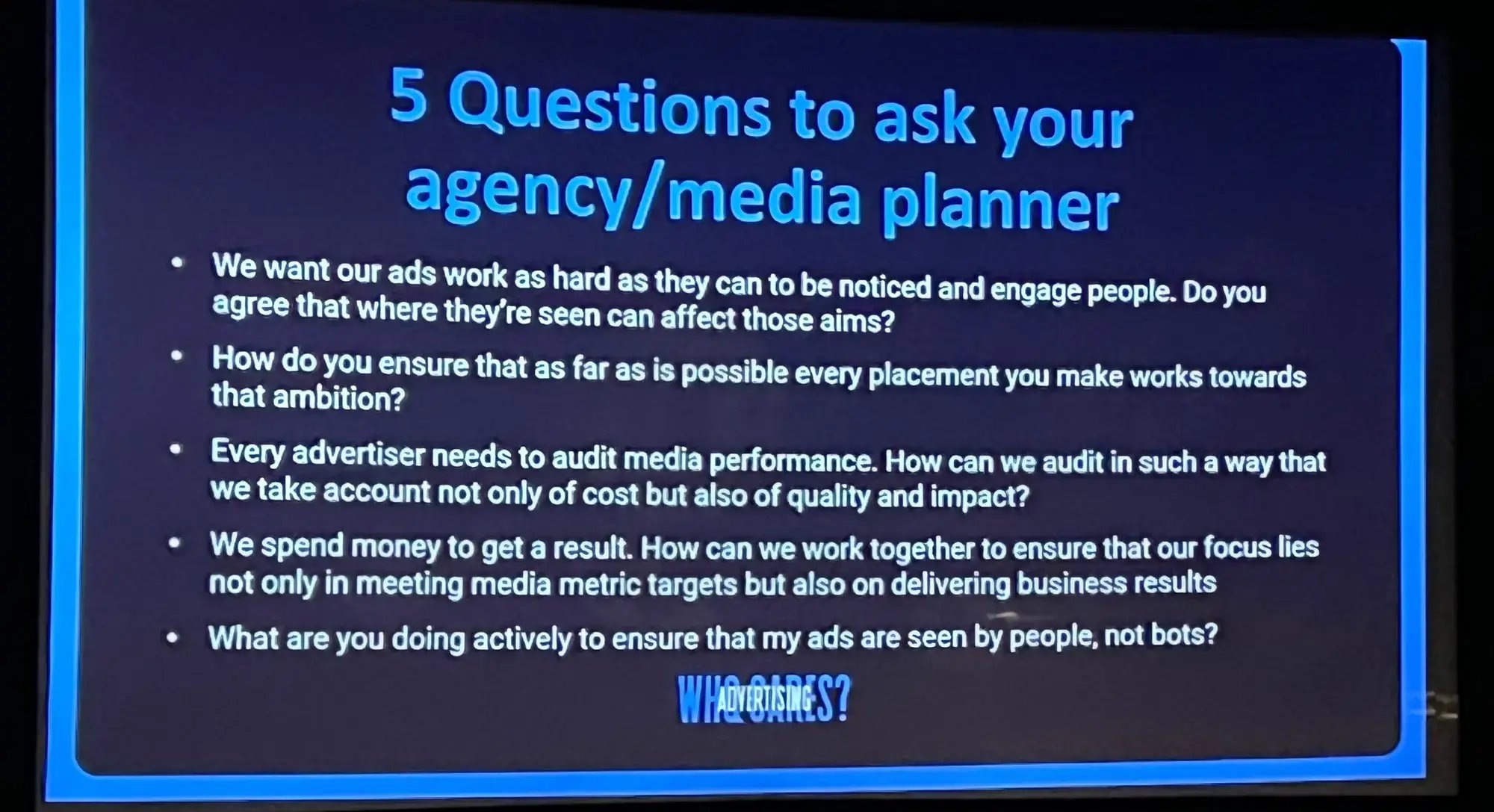
7) The Use of Creativity in Advertising
For all the talk about algorithms, trading models, and automation, the single biggest driver of advertising effectiveness remains creative quality.
When the message is memorable, the media works harder. When the creative idea is weak, no level of targeting or optimisation can save it.
Nick Manning and several speakers made a simple point. Advertising has become too functional. Too rational. Too focused on performance dashboards and not enough on human emotion.
Yet emotion is what builds memory and long-term brand preference. Without it, advertising becomes invisible.
The role of advertisers now is to restore creative ambition. That means shifting the conversation from “What is cheapest to make?” to “What will make the biggest impact?”
Creativity and media are not separate disciplines. They are two sides of the same coin. Media delivers the message, but creativity makes it worth delivering.
The future of effective advertising will depend on how well we blend creative excellence with intelligent distribution. Brands that do both will grow stronger, faster, and for longer.
What to do now:
-
Reinstate creativity as a core KPI. Track its contribution to long-term brand and business results, not just campaign outputs.
-
Protect creative budgets. Avoid cutting ideas first when efficiency targets rise. Creativity drives effectiveness, not waste.
-
Test creative quality early. Use pre-testing and emotional response tools to validate whether your message will be remembered.
-
Encourage collaboration. Bring creative and media teams together from the start. The best ideas come when both shape the brief.
-
Use AI responsibly. Let technology accelerate production, not imagination. Human insight should always guide the story.
8) Recruiting and Looking after our People
Behind every plan, every model, and every piece of technology are people making choices. And those choices shape the health of our entire industry.
When those people are undervalued, overworked, or disconnected from purpose, even the best systems fail.
The advertising ecosystem is running on tired talent. Agencies are stretched. Clients are lean. Procurement, marketing, and media teams are under pressure to do more with less.
Nick Manning described it as a “human imbalance.” We have invested heavily in automation and tools but not enough in people’s time, training, and wellbeing.
The people who once had space to think now spend their days responding to dashboards. Yet advertising remains a people business.
Relationships drive trust. Collaboration drives quality. Creativity drives effectiveness.
Technology can support all three, but it cannot replace them. The challenge now is to rebuild an environment where people can do their best work again.
For advertisers, this means looking beyond contracts and KPIs. The agency teams working on your brand are not suppliers. They are an extension of your own capability. Their performance reflects the environment you create together.
Healthy partnerships come from respect, clarity, and shared success. That is how you keep the best talent on your business, and why people remain the real competitive advantage in media.
What to do now:
-
Invest in people, not just platforms. Balance spending on tools with training, learning, and capability-building across your teams.
-
Build genuine partnerships. Treat agency teams as collaborators, not vendors. Shared goals lead to better work and longer relationships.
-
Encourage continuous learning. Support certifications, workshops, and joint training to keep teams aligned and up to date.
-
Prioritise wellbeing. Respect working hours, promote balance, and create space for creativity and reflection.
-
Celebrate progress together. Recognise collective achievements between client and agency teams to strengthen motivation and trust.
9) Working Better Together
If the industry is to rebuild trust, transparency, and effectiveness, advertisers and agencies must learn to work better together.
For too long, the relationship has been shaped by tension rather than teamwork.
Contracts have replaced conversations. KPIs have replaced curiosity. Advertisers demand more for less, and agencies respond by protecting margins or hiding value in complexity.
Everyone feels under pressure, yet no one feels fully aligned.
Both sides are trying to take as much as they can from the other instead of building shared success. It has created a cycle of short-termism, low trust, and missed opportunity.
But there is a different way forward. The most successful partnerships are those built on openness, fairness, and shared ambition.
Advertisers and agencies need to rediscover that they are on the same side, both working to grow brands, improve media outcomes, and prove the value of marketing to the wider business.
True collaboration starts with clarity. Advertisers must be clear about their objectives, their expectations, and how they define success.
Agencies must be clear about what they can deliver, how they are compensated, and where their incentives lie. When both sides are transparent, trust follows naturally.
The Advertising: Who Cares? movement calls for a shift from self-interest to best-interest partnerships. It is not about returning to old models. It is about building modern relationships that combine commercial discipline with human respect.
When advertisers and agencies collaborate as equals, the work gets better, the results get stronger, and both sides win.
What to do now:
-
Redefine partnership. Move from transactional contracts to collaborative agreements focused on shared value creation.
-
Align incentives. Link agency remuneration to outcomes that matter for both sides, such as brand growth or ROI.
-
Be transparent. Share data, context, and business priorities openly to enable better decision-making.
-
Create joint success metrics. Measure progress using common KPIs rather than separate scorecards.
-
Review regularly. Replace annual reviews with ongoing dialogue to strengthen alignment and trust.
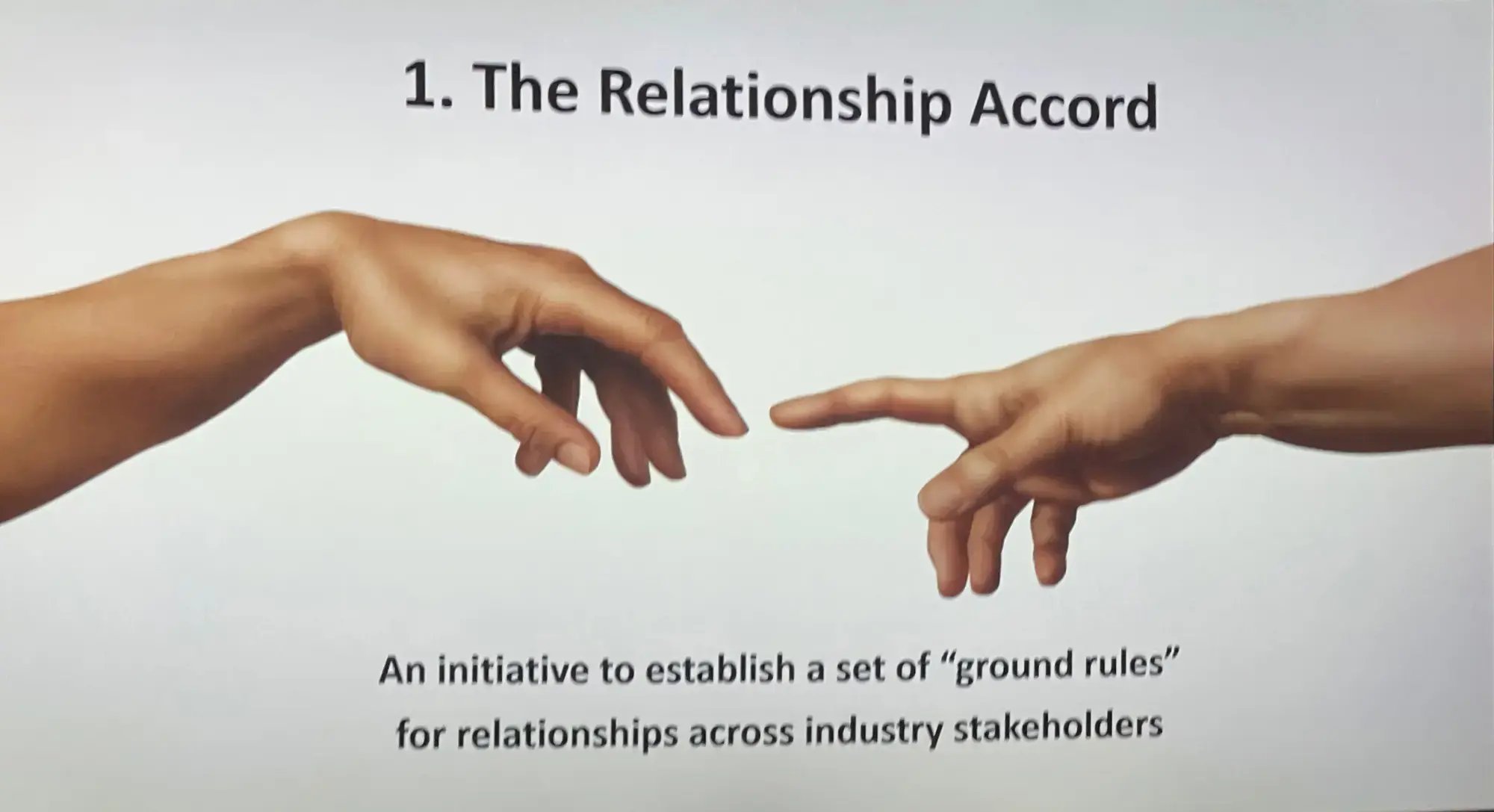
Final Thoughts
Advertising: Who Cares? is more than a conference. It is a wake-up call.
It reminds us that advertising, at its best, creates value for everyone (for brands, for agencies, for publishers, and for people).
But to reach that potential again, we need to fix what has quietly gone wrong: the models, the incentives, the measurement systems, and the human relationships that hold it all together.
Nick Manning and Brian Jacobs created this movement because they care deeply about restoring the integrity and impact of advertising.
Their message is simple. If we want better results, we must start by building a better system — one based on transparency, accountability, and trust.
At Abintus, we share the same belief. We exist to help advertisers work smarter with their media partners, rebuild control from within, and achieve lasting performance improvements.
The lessons from Advertising: Who Cares? align perfectly with our mission, i.e. to help mid-sized global advertisers get better results by fixing how media is managed, measured, and governed.
Because when advertisers and agencies work together in good faith, everyone benefits. Advertising becomes more effective, more trusted, and more valuable.
It starts with asking one simple question: Not “How much did we spend?” but “What did we achieve?”
If you want to explore how Abintus can help your organisation build better media partnerships, stronger accountability, and smarter business growth, contact us today or schedule a call with our team.
Additional resources related to this topic:
- How to maximise your media performance across markets and brands
- Is your PRF scheme effective?
- A deep dive into AVBs for Advertisers
--------------------------------------------------------------------------------
About the Author
 Philippe Dominois, co-founder and CEO of Abintus Consulting and Head Coach at the Abintus Academy, brings over 25 years of global media expertise to the table. With a wealth of experience from his tenure at leading media agencies such as Wavemaker, Starcom, and Carat, as well as more than a decade at Ebiquity, Philippe has established himself as a thought leader in the industry. He has authored hundreds of articles focusing on media management best practices, sharing his insights and knowledge with the wider media community.
Philippe Dominois, co-founder and CEO of Abintus Consulting and Head Coach at the Abintus Academy, brings over 25 years of global media expertise to the table. With a wealth of experience from his tenure at leading media agencies such as Wavemaker, Starcom, and Carat, as well as more than a decade at Ebiquity, Philippe has established himself as a thought leader in the industry. He has authored hundreds of articles focusing on media management best practices, sharing his insights and knowledge with the wider media community.
